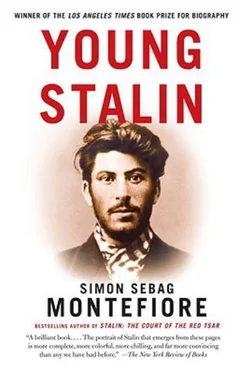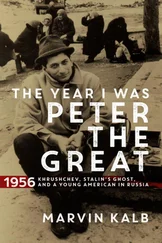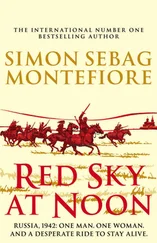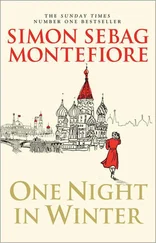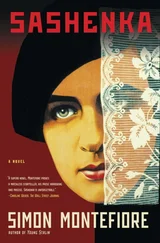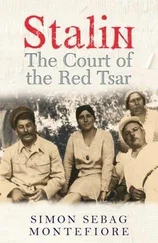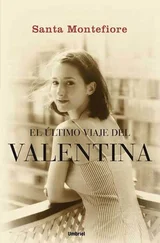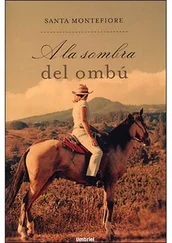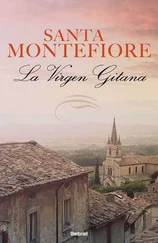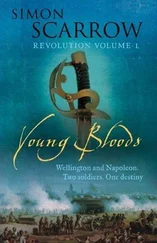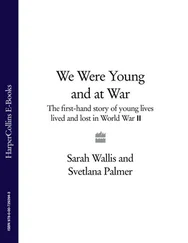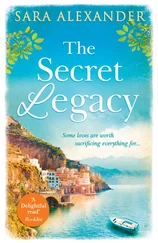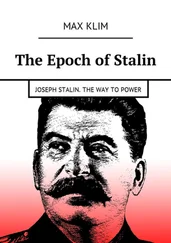Stalin, in his elliptical, mendacious way, encouraged these stories. When he chatted in his last years to a Georgian protégé, Mgeladze, he gave him “the impression that he was Egnatashvili’s illegitimate son” and seemed to deny he was Beso’s. At a reception in 1934, he specifically said, “My father was a priest.” But, in Beso’s absence, all three paternal candidates helped bring him up: he lived with the Charkvianis, was protected by the Davrichewys and spent half his time at the Egnatashvilis’ so he surely felt filial fondness for them. There was another reason for the priest rumour: the church school accepted only the children of clergy, so his mother says he was passed off as the son of a priest. {32}
Stalin remained ambiguous about Crazy Beso: he despised him, but he also showed pride and sympathy too. They had some happy moments. Beso told Soso stories of Georgia’s heroic outlaws who “fought against the rich, stole from princes to help peasants.” At hard-drinking dinners, Stalin the dictator boasted to Khrushchev and other magnates that he had inherited his father’s head for alcohol. His father had fed him wine off his fingertips in his cot, and he insisted on doing the same with his own children, much to the fury of his wife, Nadya. Later he wrote touchingly about an anonymous shoemaker with a small workshop, ruined by cruel capitalism. “The wings of his dreams,” he wrote, were “clipped.” He once bragged that “my father could make two pairs of shoes in a single day” and, even as dictator, liked to call himself a shoemaker too. He later used the name Besoshvili—Son of Beso—as an alias, and his closest Gori friends called him “Beso.” {33}
Weighing up all these stories, it is most likely that Stalin was the son of Beso despite the drunkard’s rantings about Soso as a “bastard.” A married woman was always expected to be respectable, but it is hardly outrageous if the pretty young Keke, a semi-widow, did become the mistress of Egnatashvili when her marriage disintegrated. In her memoirs, Egnatashvili appears as often as her husband, and is remembered much more fondly. She does say that he was so kind and helpful to her that it caused a certain “awkwardness.” Some of the Egnatashvili family claim there was a “genetic” connection with Stalin. However, Egnatashvili’s grandson, Guram Ratishvili, puts it best: “We simply do not know if he was Stalin’s father, but we do know that the merchant became the boy’s substitute father.” {34}
Rumours of bastardy, like those of Ossetian origins, were another way of diminishing the tyrant Stalin, widely hated in Georgia, which he conquered and repressed in the 1920s. It is true that great men of humble origins are often said to be the sons of other men. Yet sometimes they really are the offspring of their official fathers.
“When he was young,” testified a school friend, David Papitashvili, Stalin “closely resembled his father.” As he got older, says Alexander Tsikhatatrishvili, “he looked more and more like his father and when he grew his moustache, they looked identical.” {35}
By the time Soso was five, Crazy Beso was an alcoholic tormented by paranoia and prone to violence. “Day by day,” said Keke, “it got worse.”
Soso suffered bitterly, terrified of the drunk Beso. “My Soso was a very sensitive child,” reports Keke. “As soon as he heard the sound of his father’s singing balaam-balaam from the street, he’d immediately run to me asking if he could go and wait at our neighbours until his father fell asleep.”
Crazy Beso now spent so much on drink that he even had to sell his belt—and, explained Stalin later, “a Georgian has to be in desperate straits to sell his belt.” {36} The more she despised Beso, the more Keke spoiled Soso: “I always wrapped him up warmly with his woollen scarf. He for his part loved me very much too. When he saw the drunken father, his eyes filled with tears, his lips turned blue and he cuddled me and begged me to hide him.”
Beso was violent to both Keke and Soso. A son was the pride of a Georgian man, but perhaps Soso had come to represent a husband’s greatest humiliation if the evil tongues were right after all. Once Beso threw Stalin so hard to the floor that there was blood in the child’s urine for days. “Undeserved beatings made the boy as hard and heartless as the father himself,” believed his schoolmate Josef Iremashvili, who published his memoirs. It was through his father “that he learned to hate people.” Young Davrichewy recalls how Keke “surrounded him with maternal love and defended him against all-comers,” while Beso treated him “like a dog, beating him for nothing.”
When Soso hid, Beso searched the house screaming, “Where is Keke’s little bastard? Hiding under the bed?” Keke fought back. Once, Soso arrived at Davrichewy’s house with his face covered in blood, crying: “Help! Come quickly! He’s killing my mother!” The officer ran round to the Djugashvilis to find Beso strangling Keke.
This took a toll on the four-year-old. His mother remembered how Soso would take stubborn offence at his father. He first learned violence at home: he once threw a knife at Beso to defend Keke. He grew up pugnacious and truculent, so hard to control that Keke herself, who adored him, needed physical discipline to govern her unruly treasure.
“The fist which had subdued the father was applied to the upbringing of the son,” said a Jewish lady who knew the family. “She used to thrash him,” says Stalin’s daughter, Svetlana. When Stalin visited Keke for the last time, in the 1930s, he asked her why she had beaten him so much. “It didn’t do you any harm,” she replied. But that is open to question. Psychiatrists believe that violence always damages children, and it certainly did not instil love and sympathy. Many children abused by alcoholic fathers repeat the behaviour to become child-or wife-beaters themselves, but few become murderous tyrants. [11]Besides, this was far from the only culture of violence which helped form Stalin.
He himself believed in the redemptive effect and practical use of violence. When the Tsar’s Cossacks used their nagaika whips on demonstrators, he wrote, “the whiplash renders us great service.” In later life, he believed in violence as both the holy scythe of History and as a useful management tool, encouraging his henchmen to “smash people in the face as a means of checking up on them.” Yet he admitted that he “wept a lot” during his “terrible childhood.”
The family lost the home which was Stalin’s birthplace and became wanderers. They had at least nine different homes, depressing rented rooms, in the next ten years, hardly a stable upbringing. {37} Now Keke and the child went to live with one of her brothers, but Beso promised to improve and brought her back. As he “could not stop the drinking,” however, she moved in with the priest, Father Charkviani.
Keke could see the effect on her little Soso: “He became very reserved, frequently sat alone and didn’t go out to play with other children any more. He said he wanted to learn to read. I wanted to send him to school but Beso was against it.” He wanted Stalin to learn shoemaking. In 1884, Beso had just begun to teach him the craft when Soso fell desperately ill.
Smallpox was raging in Gori that year. Keke could “hear weeping in every household.” Her dearest supporter Yakov Egnatashvili lost “three of his wonderful children all in one day. The poor man almost went mad with grief.” Two sons and a daughter survived. The death of children was something else Keke shared with “godfather Yakov.” She nursed her stricken Soso. By the third day, he was deliriously feverish. The young Stalin had inherited both his mother’s freckles and her auburn hair: now he was marked for life on his face and hands by the pox. One of his nicknames—and an Okhrana code name for him—would be “Chopura” (the Pockmarked). But he survived. The mother was exultant, but at this moment her life again lurched towards disaster. Beso left her.
Читать дальше
